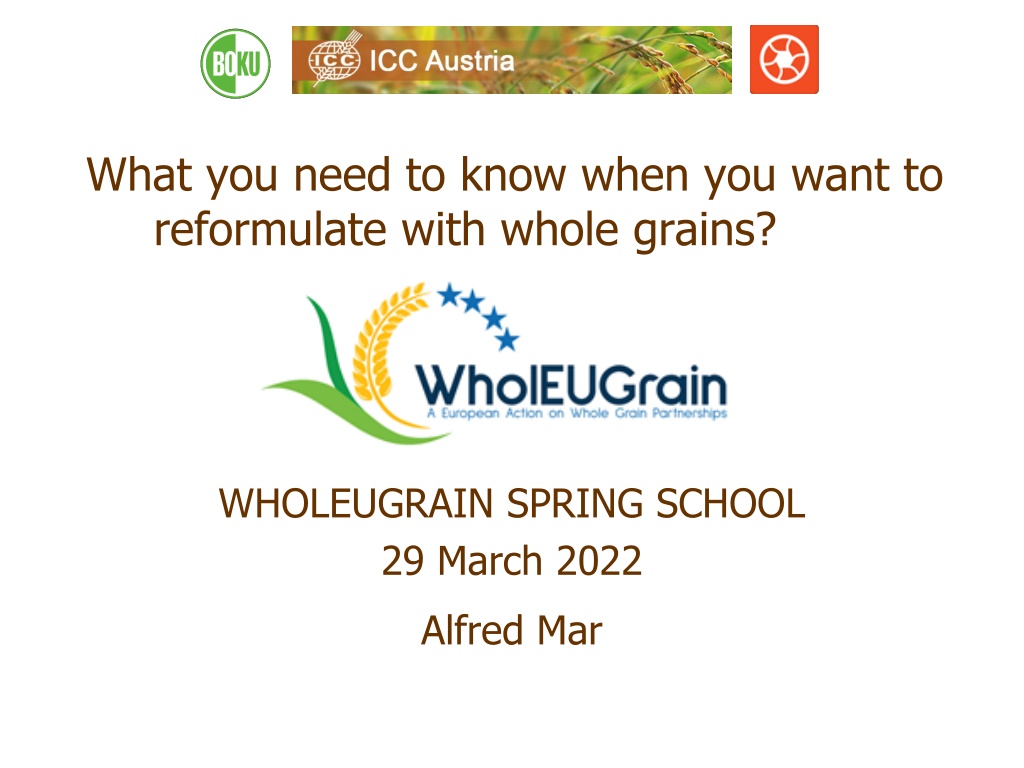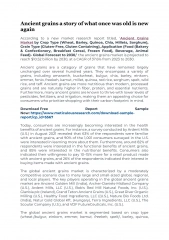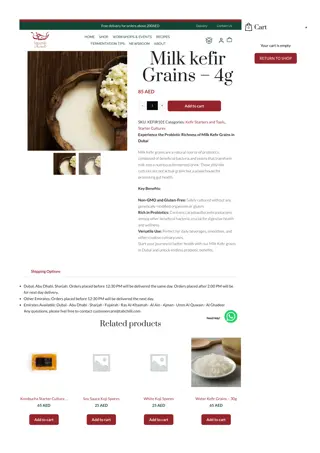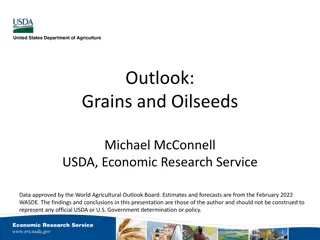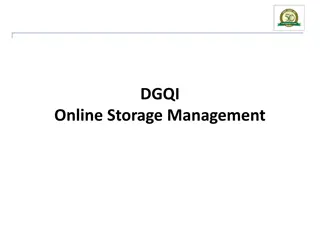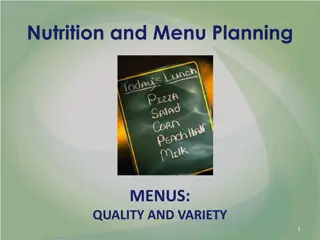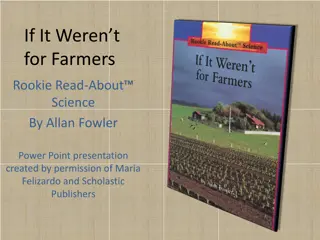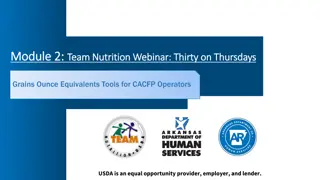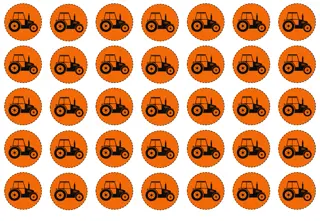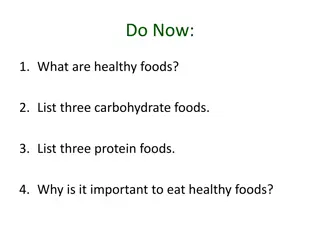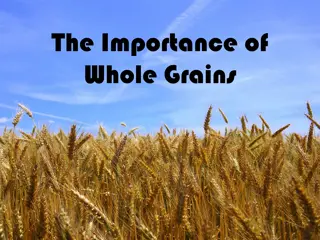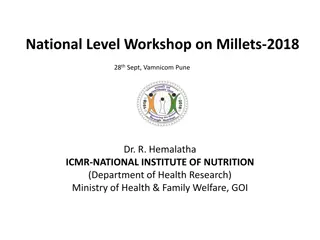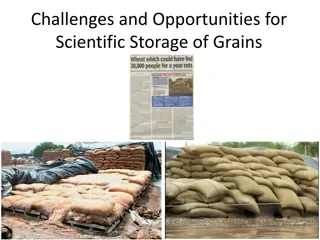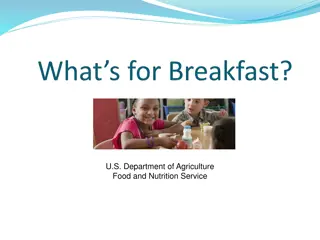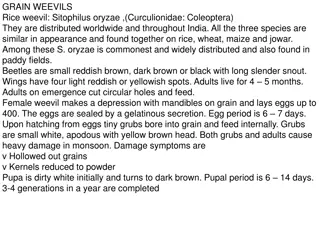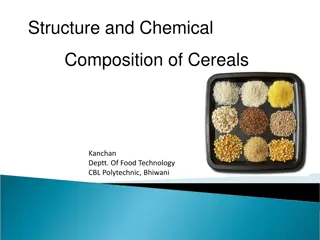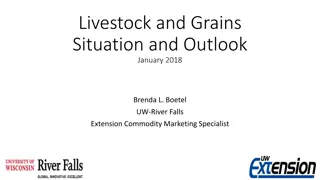Reformulating with Whole Grains: Key Considerations and Guidelines
Understanding the importance of reformulating with whole grains involves key issues such as defining whole grains, ensuring food safety, maintaining grain quality, and adhering to national regulations. It is essential to follow guidelines on whole grain ingredients, food safety practices, and the definition of whole grains to achieve successful reformulation. Considerations include the use of intact, ground, or processed kernels, cleaning and peeling for removing contaminants, and acceptable levels of losses during processing. Stay informed about water binding, swelling, particle size, and grain quality to create wholesome whole grain products.
Download Presentation

Please find below an Image/Link to download the presentation.
The content on the website is provided AS IS for your information and personal use only. It may not be sold, licensed, or shared on other websites without obtaining consent from the author. Download presentation by click this link. If you encounter any issues during the download, it is possible that the publisher has removed the file from their server.
E N D
Presentation Transcript
What you need to know when you want to reformulate with whole grains? WHOLEUGRAIN SPRING SCHOOL 29 March 2022 Alfred Mar
Key issues - reformulation Use of whole grain definition national or WGI Food safety Grain quality, flour quality Particle size Water binding, swelling National regulations for whole grain food (e.g. whole grain bread) Dipl.Ing. Alfred Mar 2
Whole Grain Ingredient WGI Document May 2019 Cereals and pseudocereals intact, ground, cracked, flaked or otherwise processed kernels (e.g. fermented, malted, sprouted) endosperm, germ and bran in the same relative proportions as in the intact kernel Dipl.Ing. Alfred Mar 3
Food Safety Importance of cleaning and peeling removal of surface contaminants Distribution of Contaminants in grain kernels, e.g. Cadmium (Cit.: J. Begemann, Max Rubner Institute, Detmold, INGESA, 03.06.2016) Dipl.Ing. Alfred Mar 4
Definition of Whole grain Int. Whole Grain Initiative May 2019 Small losses of components that occur through processing methods consistent with safety and quality are allowed. Removal of the very outer bran layer (parts of pericarp) is acceptable for minimising levels of undesirable substances such as bacteria, mycotoxins, agrochemicals and heavy metals surface contaminants Dipl.Ing. Alfred Mar 5
Definition of Whole grain Int. Whole Grain Initiative May 2019 The maximum acceptable level of losses depends on the type of grain and local conditions and will therefore be kept open to local regulators (for wheat discussed 2% of grain weight or 10% of bran). Processing incl. cleaning should not result in a >10 % reduction in the dietary fibre content as an indicator of the amount of beneficial components within the whole grain. Dipl.Ing. Alfred Mar 6
Contaminated kernels Optical separation Sortex Buhler comp. (CH) Dark, spotted or light kernels scanned and ejected by air valves. Dipl.Ing. Alfred Mar 7
Grain quality, flour quality e.g. Whole grain bread Overall objective: achieving consumer s high acceptance Wheat and rye: high baking quality to obtain a leavened crumb and good bread volume Wheat: sufficient gluten amount and quality Rye: adequate starch gelatinisation, enzymatic activity and arabinoxylan content recombined whole grain flour option to meet the needs Dipl.Ing. Alfred Mar 8
Milling Whole grain Traditional straight milling Passage milling fractions 1 to n Recombined whole grain flour Dipl.Ing. Alfred Mar 9
Flour quality particle size e.g. Whole grain bread Basic decision and measures to achieve sensory quality standards Whole grain visible coarse meal, broken/cut or intact kernel water amount, swelling process, softening of endosperm structure Fine grade whole grain flour particle size Recommendation 60 % 100 to 300 m, max. 20 % >300 m Dipl.Ing. Alfred Mar 10
Formulation of whole grain product e.g. Whole grain bread Priority: national regulation Alternative: recommendation of WGI Example Whole Grain Bread Austria: min. 90 % WG of cereal product amount Comparison WGI: min. 50 % WG of dry matter Amount of water WG higher water binding ability Swelling process: time and temperature Dipl.Ing. Alfred Mar 11
Swelling process water binding Long time low temperature e.g. up to 24 h and 30 C E.g. yeastless spongedough, dough yield 200 Hygienic risk, recommendation fermented dough (sour dough) Short time controlled temperature process Cooked cereals : dough yield up to 300 Controlled heating up to 80 to 85 C Optional rest at 65 C enzymatic digestion Holding max. temperature 10 to 20 minutes Controlled cooling down (very short time between 40 to 20 C, avoiding development of mesophile microorganisms) Dipl.Ing. Alfred Mar 12
Summary Based on national regulation or recommendation of WGI High quality level of Whole Grain Food (bread, pasta, fine bakery ware, other cereal based products) With high consumer s acceptance Care for Food safety Use of milling products meeting the standards of specific quality (e.g. baking ability) Utilize the higher water binding ability, swelling process with sufficient time and temperature Dipl.Ing. Alfred Mar 13
Many thanks for your attention Dipl.Ing. Alfred Mar 14
